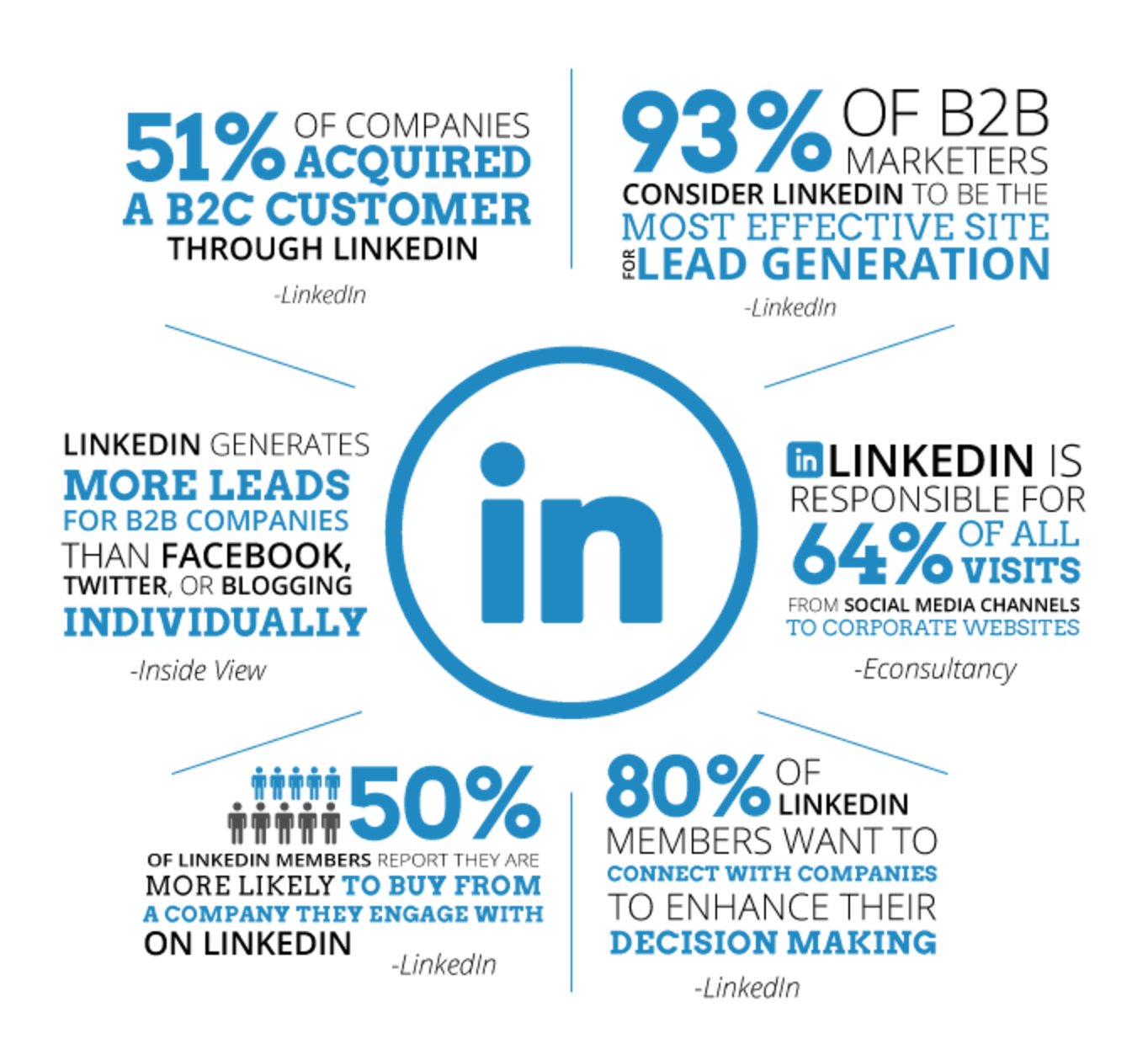Are you wondering if LinkedIn marketing works in today’s competitive professional landscape? You’re not alone, as many businesses are searching for the golden ticket to stand out in the professional networking platform of over 950 million users. Look no further, as we’ve gathered the most effective strategies for 2024 to help you make the most out of your LinkedIn marketing efforts.
Yes, LinkedIn marketing does work, especially when brands optimize their strategies by understanding the platform’s unique professional audience, targeting the right demographics, creating valuable and engaging content, and leveraging LinkedIn’s built-in features and tools. By establishing clear goals and target audiences, businesses can increase brand awareness, generate leads, and showcase their thought leadership on LinkedIn.
Ready for an in-depth look at these strategies and more? Keep reading to uncover valuable insights and practical advice, ensuring that your LinkedIn marketing efforts yield fruit in 2024.
Understanding LinkedIn Marketing Effectiveness
LinkedIn, as the world’s largest networking platform for professionals, is a goldmine for businesses wanting to tap into a community of individuals who are engaged, affluent, and open to professional insights and opportunities. With over 950 million users, LinkedIn targets predominantly professional demographics, making it a prime platform for B2B marketing and thought leadership engagement. This unique environment enables companies to connect directly with professionals across various fields and sectors, unlike most other social networking sites that focus mainly on casual or personal interactions.
The platform’s primary focus is on professional engagement, networking, and content sharing revolving around industry insights, company news, and professional growth. Users on LinkedIn are typically looking to expand their professional network, gain industry-relevant knowledge, and discover job opportunities. As such, LinkedIn offers a conducive setting for businesses to engage audiences with professional and industry-related content.
Establishing Goals and Target Audiences
As with any marketing strategy, it’s vital to define clear business goals when planning your LinkedIn marketing approach—whether it’s increasing brand awareness, lead generation or establishing thought leadership. Identifying and understanding your target audience, primarily based on LinkedIn’s user demographics, is also of paramount importance. For instance, targeting content based on factors like job title, industry, and location can greatly improve engagement and conversion rates for your business.
Once you’ve defined your business goals and understood your target audience, make sure to align your content and messaging to these individuals’ needs and career aspirations. This ensures that your LinkedIn marketing initiatives resonate with the right people, leading to increased engagement and opportunities for your business.
Content Strategies for Professional Engagement
Content is king, and LinkedIn is no exception to this rule. The most engaging content on LinkedIn tends to be informative blog posts, in-depth sector analyses, and interactive content that enhances professional learning and growth.
Consistent posting and engagement are also crucial for LinkedIn. The platform recommends posting at least once or twice daily, with a minimum of one weekly post. This regularity of posting can effectively double your engagement, making your brand more visible and influential on LinkedIn.
There’s an immense potential for various content types on LinkedIn, such as thought leadership articles and comprehensive industry reports, which are highly favored. Remember, your content should provide value to your audience, helping them learn something new, solve a problem, or understand industry trends better.

Source: Neil Patel
Leveraging LinkedIn Features and Tools
LinkedIn provides a series of platform-specific features and tools that you can use to enhance visibility and engagement. One of these features is LinkedIn Pages, which allow you to showcase your business, engage with followers, share career opportunities, and publish content.
Showcase Pages represent another unique feature that helps highlight specific aspects of your business, such as a significant product line or an ongoing campaign. By enabling companies to segment their messaging, these pages allow for targeted content marketing that speaks more directly to specific audience segments.
Then there’s the world of LinkedIn’s advertising options—another crucial aspect of your LinkedIn marketing strategy. Advertising on LinkedIn can significantly extend your content’s reach, particularly when you want to connect with new audiences or target decision-makers in specific industries.
Maximizing Engagement and Building Relationships
Strategies for Engaging with the LinkedIn Community
Engagement is key to a robust LinkedIn presence. Regularly engaging with content (by liking, commenting, and sharing), networking with others, and contributing to professional conversations helps build a meaningful presence on the platform. Cultivating such engagement is essential in fostering relationships on LinkedIn.
Employee advocacy on LinkedIn is another vital strategy to increase organic reach—employees, on average, have 10 times more first-degree connections than a company has followers. Encouraging your employees to share and engage with your company content can significantly amplify its reach.
LinkedIn Groups also play a crucial role in nurturing your LinkedIn community. Not only can these groups help you maintain a pulse on industry trends and discussions, but they also offer a platform where your business can share insights, establishing itself as a thought leader.
Importance of Employer Branding on LinkedIn
LinkedIn provides an excellent platform for showcasing your company culture and values, which is critical in attracting the right talent. Leveraging employee experiences and testimonials can enhance your employer brand, giving potential employees a glimpse into your company, its culture, and why it’s a great place to work.
Don’t forget to showcase company achievements and workplace highlights to attract professionals. Celebrating awards, milestones, team retreats, or volunteer activities can really underscore your company’s culture and values, making it more attractive to potential employees and partners.
LinkedIn Marketing Analytics and Refinement
In order to gauge the effectiveness of your LinkedIn marketing strategy, you’ll want to heavily rely on LinkedIn’s analytics tools. These tools let you measure performance and fine-tune your approach based on data-driven insights. From discovering the best type of content for your audience to understanding ideal posting times—it’s all there in your LinkedIn analytics.
Continual adjustments to your content strategy based on engagement rates and audience feedback will also yield better results. And if you’re keen for a deeper dive into your metrics, third-party analytics tools can offer more sophisticated tracking and insightful performance data.
Implementing Personalized Messaging and Outreach
Personalized communication always leaves a better impression, and LinkedIn’s InMail and direct messaging features enable businesses to undertake such personalized networking and outreach. Crafting customized outreach campaigns specifically tailored to your recipients’ professional needs and goals will likely lead to improved connection rates and higher engagement.
As per LinkedIn’s best practices, sending individual messages and keeping them concise tends to result in higher response rates. It’s all about striking the right balance between a personable tone and a professional approach, so make sure your message is clear, concise, and respectful of your recipient’s time.
Successfully combining these elements—understanding the LinkedIn environment, setting clear goals, creating valuable content, maximizing LinkedIn’s features, and fostering strategic engagement—is the secret to an effective LinkedIn marketing strategy. It not only works, but it’s also a potent tool for businesses to leverage in this increasingly digital age where Organic Marketing is gaining more and more traction. Keep in mind, however, that LinkedIn marketing requires commitment, constant optimization, and a finger always on the pulse of trends and changes in both your industry and LinkedIn’s ever-evolving platform.
Enhancing Lead Generation and Sales Approaches
LinkedIn’s stand as the leading social media platform for generating B2B leads is unarguable. Given its tailored professional environment, the platform excels at establishing connections that can bloom into lucrative business relationships.
A crucial part of LinkedIn marketing pivots around the fusion of organic content strategies with sponsored content and paid advertising. This concoction maximizes visibility by targeting the right set of professionals who are eager for solutions that you offer. LinkedIn provides a variety of advertising formats including, but not limited to, Sponsored Content, Message Ads, and Text Ads. These targeted campaigns allow for precision marketing, directing your value proposition straight to the decision-makers who matter the most.
Creating sales opportunities through LinkedIn can be streamlined by curating content that resonates with decision-makers, thereby influencing their purchase decisions. By focusing on problem-solving, aligning with product offerings, and utilizing LinkedIn in the sales funnel from awareness to decision-making, the promise of successful conversion is in your favor.
Moreover, sustainable sales success on LinkedIn is not an overnight event; it should as a cycle – acquiring, building, and nurturing relationships. Techniques for lead nurturing on LinkedIn are vast ranging from personalized follow-ups to providing continuous value through content, each serving as a consistent reminder of your value proposition to your prospect.
Building a Strong LinkedIn Network
Growing and maintaining a strong professional network on LinkedIn should be at the core of every user. Effective strategies for augmenting this network include thoughtful connection requests, personalized outreach messages and endorsements, and an active presence. Remember, daily activities that lead to an engaged network not only widens your audience reach but also the potential for more connections.
LinkedIn also happens to be an excellent tool for personal and professional development. From consuming courses, reading insightful articles, joining professional groups to sharing thought-provoking content, building a competent image in the industry becomes easier. In fact, consistent insightful content often positions both personal and company profiles as industry thought leaders, thereby boosting brand influence.
Advanced LinkedIn marketing tools like Sales Navigator and LinkedIn Learning enhance this process. With functionalities that go beyond basic networking to skill development, these tools are a game-changer. Additionally, LinkedIn can be leveraged for market research and competitor analysis, giving your business the chance to stay a step ahead in the market hustle.
All these efforts culminate in one pertinent question – the return on investment (ROI). Understanding LinkedIn’s role in your overall marketing strategy helps ascertain its contribution to your business growth. To do this, metrics such as lead quality, conversion rates, and engagement levels become critical. By assessing the ROI of your LinkedIn marketing efforts, your marketing approach remains flexible, scalable, and success-oriented.
Frequently Asked Questions
How effective is LinkedIn for B2B lead generation?
LinkedIn is considered the premier social media platform for B2B lead generation. Its professional environment is designed to foster business relationships, making it an incredibly powerful tool for connecting with business decision-makers.
How can I balance organic and paid marketing tactics on LinkedIn?
Organic strategies on LinkedIn involve nurturing your network, regularly sharing pertinent content, and actively participating in discussions. Paid strategies can include sponsored content, message ads, and text ads. Both approaches can be blended strategically to optimize visibility and engagement.
How can I create sales opportunities through LinkedIn?
Creating LinkedIn content that solves problems and aligns with your product offerings can be influential in the buying decisions of your prospects, thereby leading to sales opportunities. This content could range from whitepapers, blog articles to insightful videos and more.
How can I effectively grow and maintain my network on LinkedIn?
Growing your LinkedIn network involves sending personalized connection requests, engaging with posts, and giving and receiving endorsements. Regular, consistent engagement along with sharing valuable content can help you maintain your network by keeping your connections engaged.
What are some popular advanced LinkedIn marketing tools?
Popular advanced LinkedIn marketing tools include LinkedIn Sales Navigator, which offers advanced lead and company search capabilities, and LinkedIn Learning, which provides access to thousands of expert-led courses on various skill sets. These tools can significantly boost your networking as well as professional development on LinkedIn.
In conclusion, whether your goal is to drive brand awareness, generate quality leads, or establish industry thought leadership, LinkedIn marketing is a potent strategy to embrace. But remember, the secret to LinkedIn marketing isn’t just about being present, it’s about being productive. By enhancing your lead generation process, cultivating a strong network, and continuously assessing your performance, you can, indeed, make LinkedIn work for your business.


